
Arboretum d'Antsokay is a private botanical garden south of the city of Toliara. Its mission since 1980 has been to help conserve the endangered flora of southwestern Madagascar. We weren't there to see the plants, though. We were there for one guided night walk, one guided day walk, three delicious meals, a comfy sleep, and a little bit of wandering time around those other activities. It's not a big place compared to the parks we had been visiting, but we found an assortment of interesting animals nonetheless.

Yellow-spotted Ground Beetle,
Craspedophorus sp
Upon arrival in the late afternoon after a long drive from Isalo, we were handed the keys to our bungalows and given about an hour before dinner to freshen up or whatever. Naturally, I tossed my bags into my room, grabbed my camera, and used that hour to poke around the grounds and see what I could find. Just outside my front door this pretty beetle caught my eye.

Flatopsis nivea
We had already seen these sharp-angled little planthoppers at various other locations, but I couldn't resist photographing them each time.
The variety of native plants at the botanical garden supported a diverse collection of butterflies and moths.

Azanus sitalces
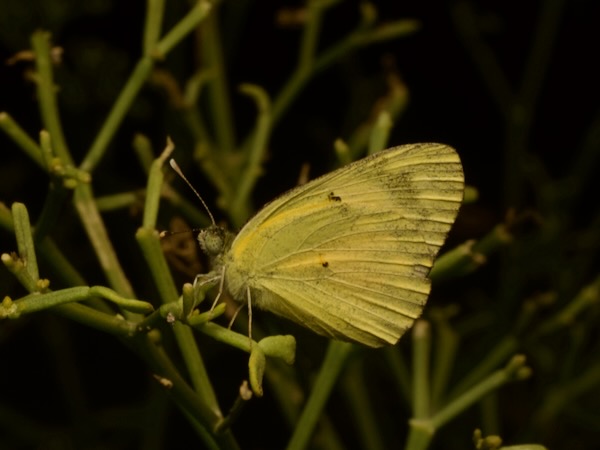
Small Salmon Arab, Colotis calais

Malagasy Hairstreak, Hemiolaus cobaltina

Nephele densoi

Royal Blue Pansy, Junonia rhadama
I saw more types of orthopterans (grasshoppers/crickets/katydids) in this small area than in most or maybe all of the larger parks we had visited. Unfortunately I haven't been able to get many of them identified very precisely.
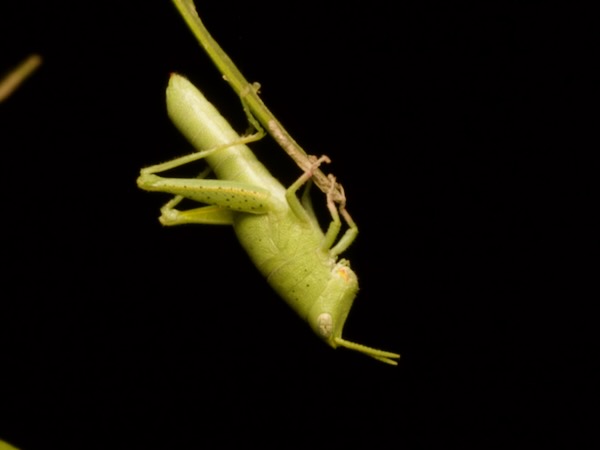
Grasshopper of some type, you tell me

Different but equally unidentified grasshoppers
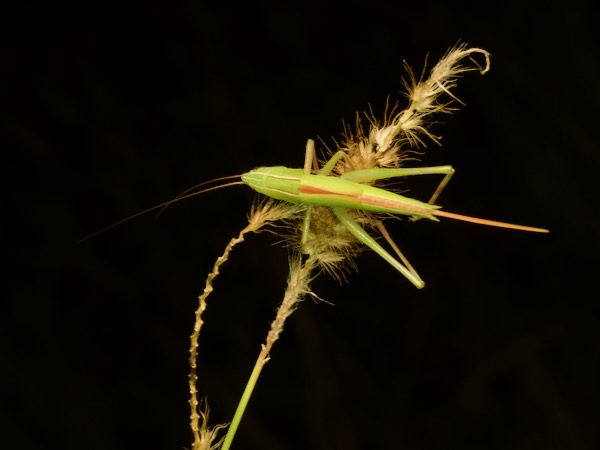
Unidentified katydid, subfamily Conocephalinae
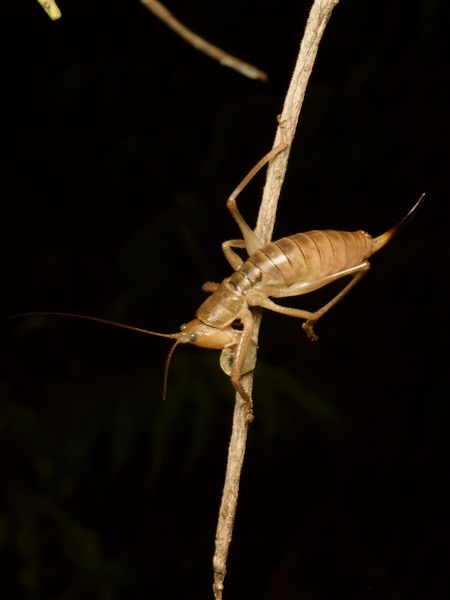
Amblylakis nigro-limbata

Unidentified bushhopper, family Euschmidtiidae
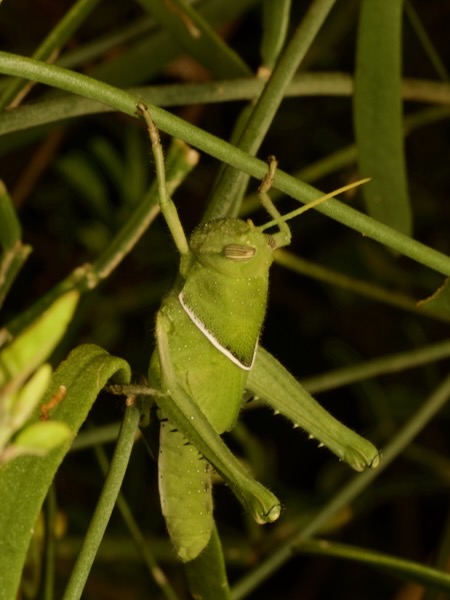
Brown-spotted Locust,
Cyrtacanthacris tatarica
Yeah, I know, there aren't any brown spots. Don't blame me, blame whoever came up with this name.
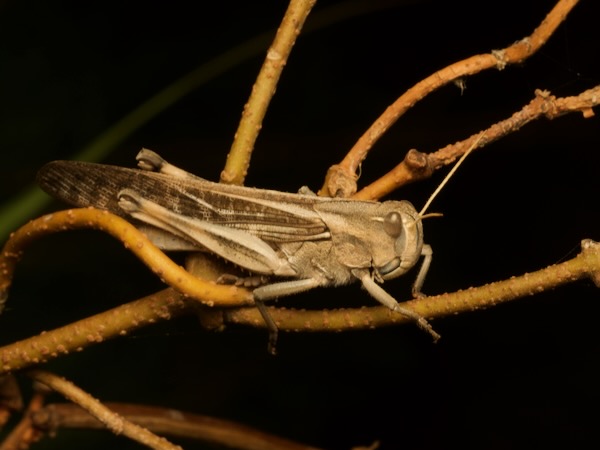
Migratory Locust, Locusta migratoria

Colossopus grandidieri
Definitely the weirdest and most worrisome of the katydids I saw on this trip.
I also saw three mantis species at Arboretum d'Antsokay, which is pretty good for less than 24 hours in such a small area.
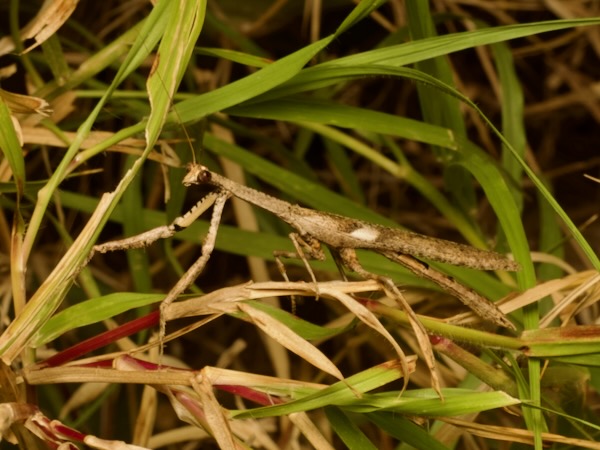
African Stick Mantis, Popa spurca
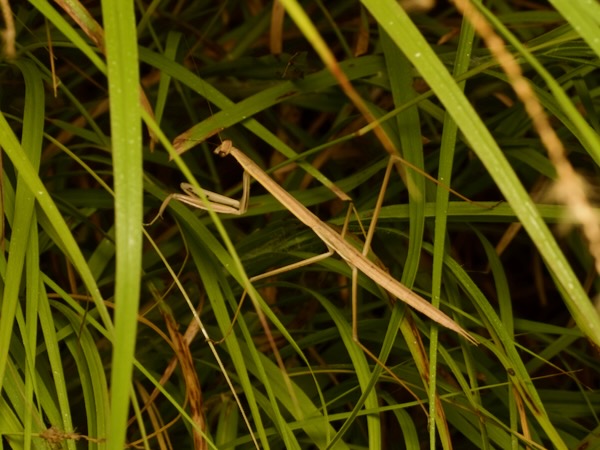
Stick Mantis, Tenodera superstitiosa

Euchomena madecassa
In our night walk around the botanical garden, we saw a number of excellent animals that most people would probably be just as happy not seeing. These people are wrong, obviously.
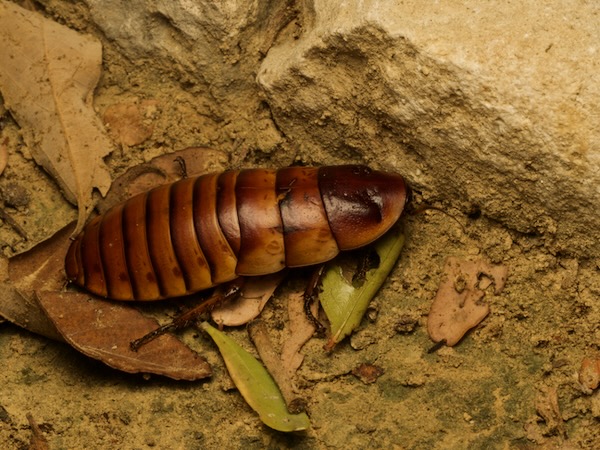
Elliptorhina sp. Maybe Elliptorhina chopardi, but maybe not.
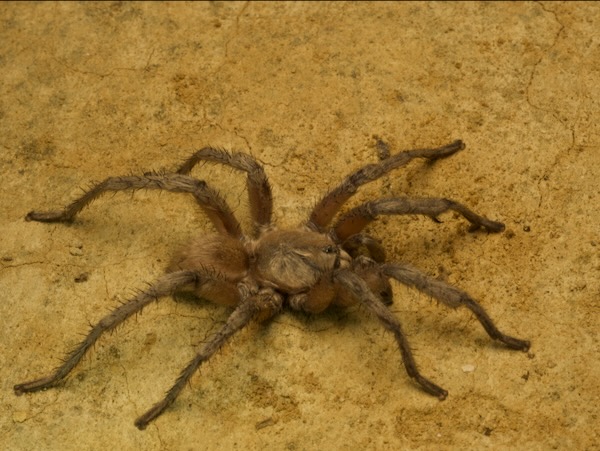
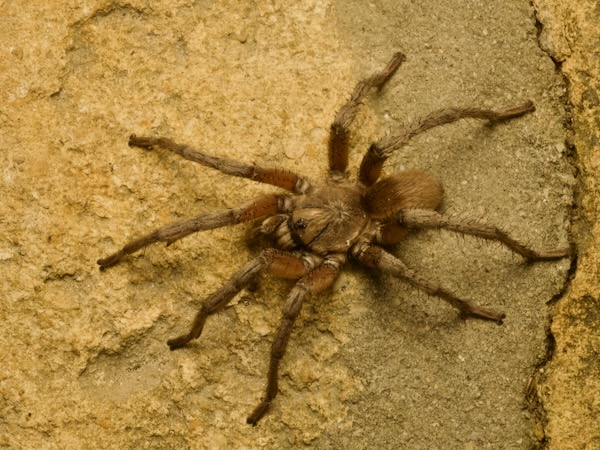
Brushfooted Trapdoor Spiders, family Barychelidae
We saw at least five or six of these large spiders, which are tarantula-like but not quite technically tarantulas.

Ornamental Wandering Spider,
Viridasius fasciatus
These were also quite common. Not as large as the Trapdoor Spiders, but much faster.

Teruelius sp
Have you got an earwig problem in your yard? No problem, we have a solution for you!
Various birds flitted or perched or strutted about in the morning. Being birds, most of them flitted away without posing for a decent photo, but a few were more cooperative.

Red Fody, Foudia madagascariensis

Red-capped Coua, Coua ruficeps
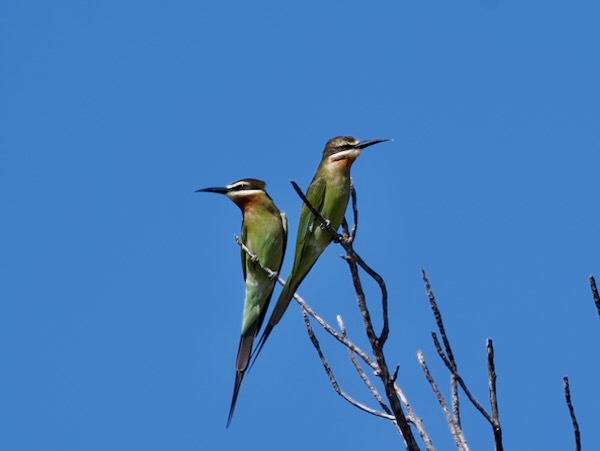
Madagascar Bee-Eater, Merops superciliosus
I saw a total of one count-'em one mammal at the Arboretum. Since it is a lemur I am honor-bound to include it here, even though the picture isn't good.
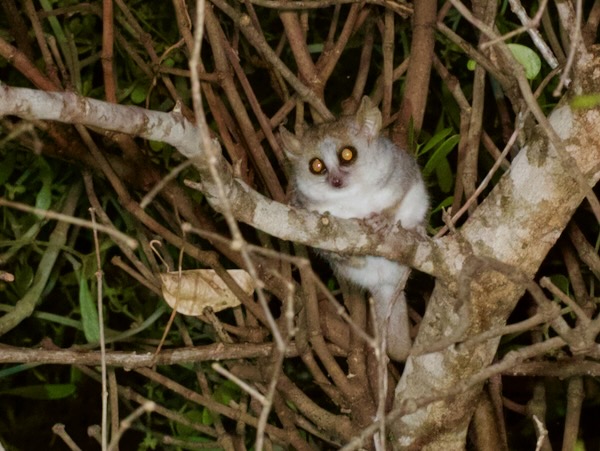
Grey-brown Mouse Lemur, Microcebus griseorufus
Unsurprisingly, this Madagascar dry zone does not support a lot of frogs. We saw only one frog species, but at least we saw quite a few of them as they hopped about toad-like in the sand and leaf litter.
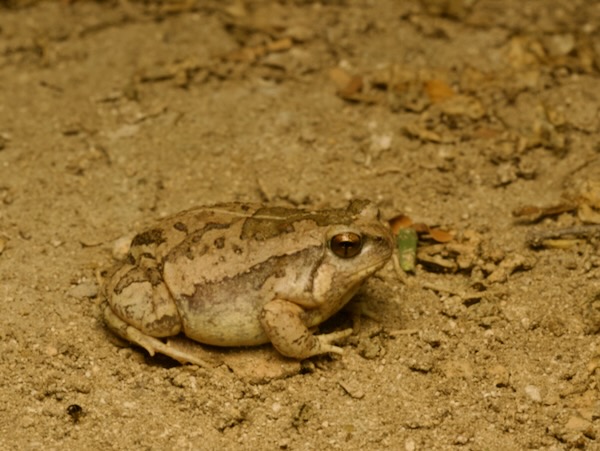
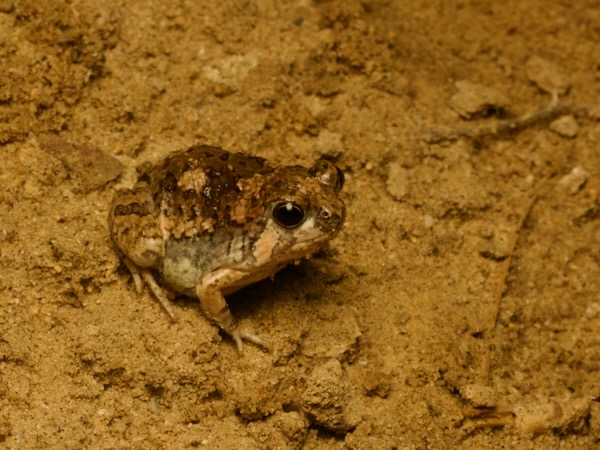
Brown Rain Frog, Scaphiophryne brevis
We also saw only one snake species at the Arboretum. Indeed, we saw only one snake. But the good news is, it wasn't the default snake, Madagascarophis colubrinus. Instead, it was a sibling species that looks only slightly different. Still, new species for us!
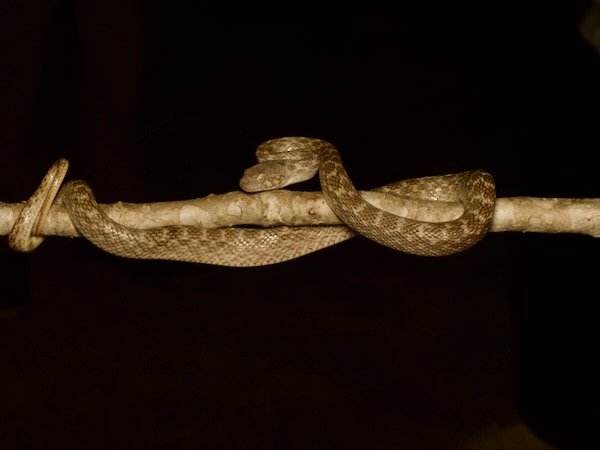
Karimbola Cat Snake, Madagascarophis meridionalis
Lizards are a different story. We saw at least ten lizard species, several of which were new to us. Just another example of how lizards are better than snakes.

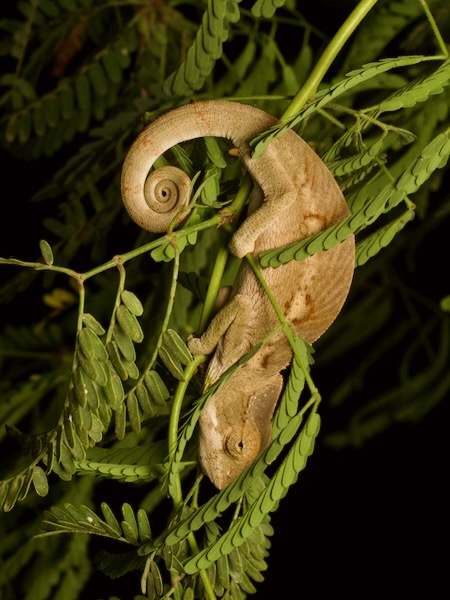
Spiny Chameleon,
Furcifer verrucosus
On our night walk, the first and I think most plentiful lizards we saw were these chameleons. Adult males have distinctively large dorsal ridge spines, but juveniles and females like these are extremely similar to Furcifer oustaleti.
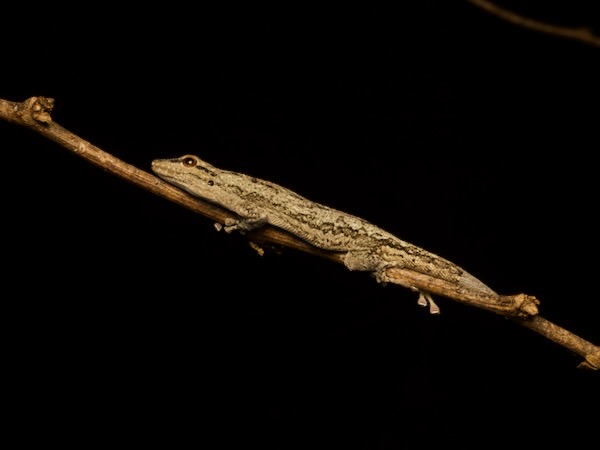
Lygodactylus tuberosus
I confess that I have a hard time distinguishing Lygodactylus from dull-colored Phelsuma. I think this is the former but I wouldn't be too surprised if I were wrong.
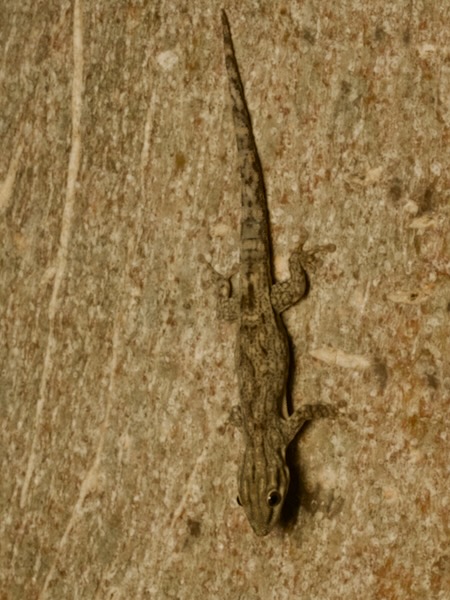
Thick Tail Gecko,
Phelsuma mutabilis?
I lean the other way on this one, but I am far from confident.
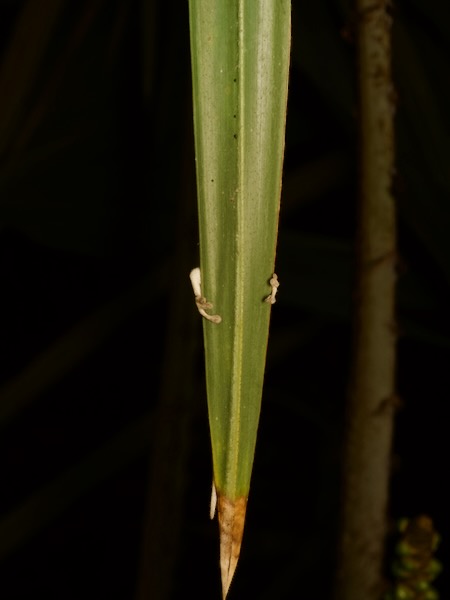
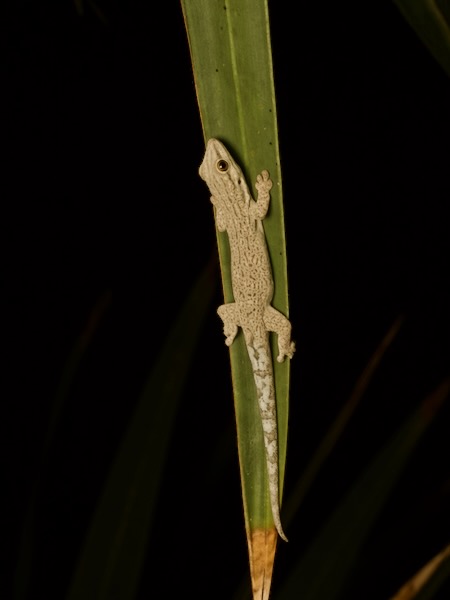
Thick Tail Gecko,
Phelsuma mutabilis
I am pretty confident with the ID on this one, due in part to the faint blue on the tail. The first photo shows how I found the lizard. The second photo shows the other side of the leaf.


Mahafaly Fish-scaled Gecko,
Geckolepis typica
Between their large scales and cute little snouts, these fish-scaled geckos are easy to distinguish from other gecko groups. The different Geckolepis species can be difficult to tell apart from each other, but fortunately (at least as of this writing) only one species is known from this area. The first photo is a large chonky adult. The second photo is an adorable little baby.
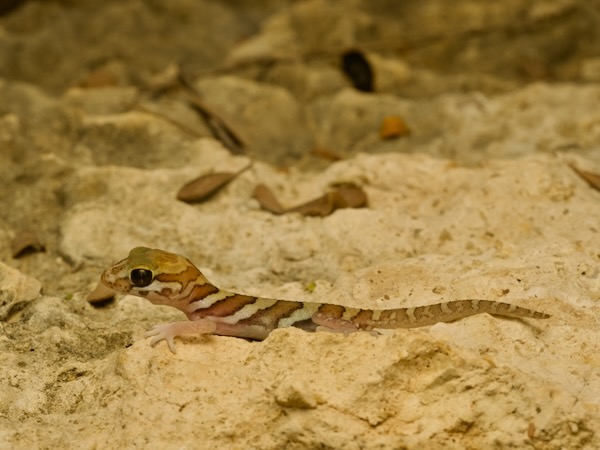
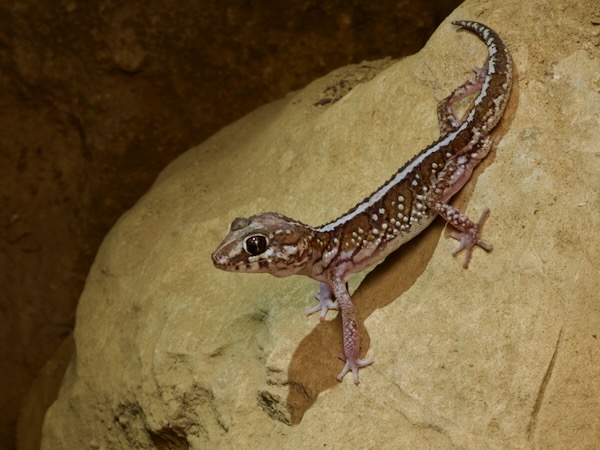
Madagascar Ground Gecko,
Paroedura picta
By far the most beautiful of the Arboretum geckos that we saw, this was also the only terrestrial species. We saw half a dozen or so in a couple of hours.
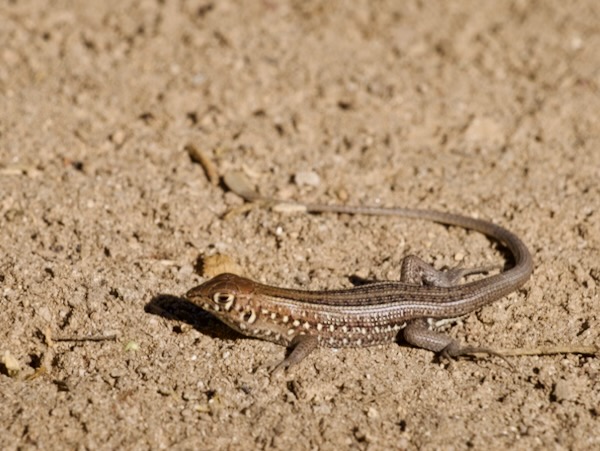
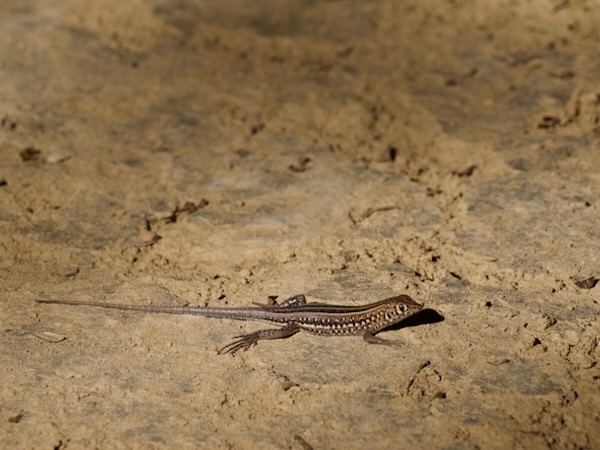
Madagascar Keeled Cordylid,
Tracheloptychus madagascariensis
The morning shift of lizards was, unsurprisingly, quite different from the night shift. I first saw these on sandy patches of ground between the Arboretum buildings, on my way to breakfast. Later in the morning we saw many more on the trails.


Madagascar Iguana,
Chalarodon madagascariensis
The Cordylids shared the sandy trails with these guys, whose common name is based on the fact that they were formerly included in the family Iguanidae. (Now they are grouped into the family Opluridae, often called "Madagascar Iguanas"). They are also sometimes called "three-eyed lizards" due to a dark spot on the top of the head that seems to sense light to some extent.
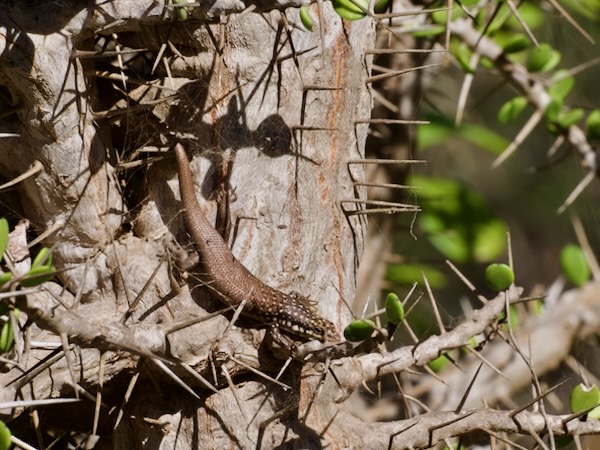
Gold-spotted Mabuya,
Trachylepis aureopunctata
We also spotted (ha!) a few of these attractive skinks on trees, rocks, and stoneworks. This species is much more widespread than the very similar-looking Trachylepis nancycoutuae we had seen at Isalo.

Common Burrowing Skink,
Grandidierina fierinensis
While the rest of us were content to admire and photograph all of the surface-active lizards, José was busy turning over rocks until he found this, the Lizard of the Day.
Next: Ifaty














































